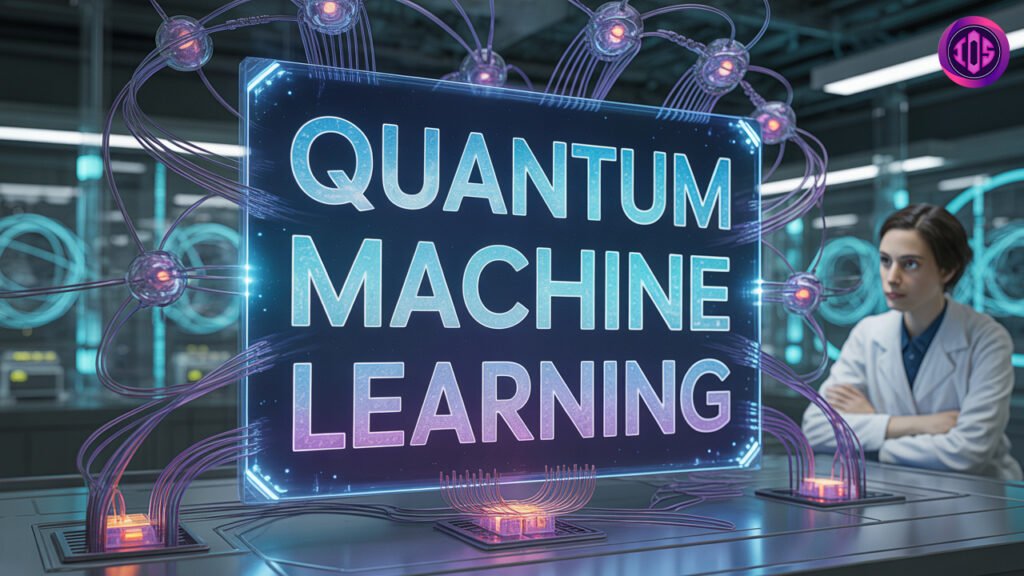The Future of AI Isn’t Just Faster It’s Quantum
Artificial intelligence has already reshaped industries, from healthcare to finance, and from manufacturing to logistics. But as datasets grow and models become more complex, classical computing is beginning to hit its limits.
Quantum Machine Learning (QML) is emerging as a powerful new field that combines quantum computing with machine learning. The goal isn’t just to speed up existing AI processes, but to unlock capabilities that weren’t previously possible.
What Is Quantum Machine Learning?
Quantum Machine Learning merges the foundational principles of quantum mechanics with advanced data processing. While classical computers use binary bits (0 or 1), quantum computers use qubits, which can exist in multiple states simultaneously thanks to properties like superposition and entanglement.
This allows quantum systems to process massive amounts of data in parallel, making certain types of AI tasks like optimization, classification, and simulation significantly more efficient.
According to IBM, quantum computing has the potential to solve problems too complex for even the most advanced classical systems, especially in fields like machine learning and scientific modeling.
SOURCE: https://images.app.goo.gl/jsFYgu17dUN2fWz86
Real-World Applications of Quantum Machine Learning
QML is no longer just an academic concept. It is already being applied in critical, high-value sectors.
Drug Discovery
In 2024, a collaborative effort between IonQ, AstraZeneca, AWS, and NVIDIA produced a breakthrough in simulating a chemical reaction central to drug development. The team achieved a 20x speedup in computational time using a quantum-accelerated workflow, proving that QML can dramatically reduce R&D cycles in pharmaceuticals.
Financial Optimization
Financial institutions are exploring quantum algorithms to optimize investment portfolios, assess risk more accurately, and simulate economic scenarios. These algorithms can evaluate thousands of potential market outcomes simultaneously, helping firms make faster, smarter decisions.
Aerospace and Manufacturing
Engineers are integrating QML into computational fluid dynamics (CFD) models, using quantum-enhanced simulations to improve accuracy and reduce time in designing complex systems like aircraft, turbines, and engines. Companies like Ansys are already incorporating quantum components into their simulation platforms.
Artificial Intelligence
Quantum processors are being tested as part of AI pipelines. In low-data environments, quantum-enhanced classification models have shown improved accuracy in tasks such as sentiment analysis and anomaly detection. Research is also being conducted into using quantum layers in large language models.
Comparing Quantum and Classical ML Performance
SOURCE : Research Gate Publications
Limitations of Quantum Computing
Technological Challenges:
Quantum computers are still in their development. Building stable qubits and ensuring their coherence over long periods remains a significant challenge.
Error Rates:
Quantum systems are highly sensitive to noise and errors, and techniques for quantum error correction in quantum computing are still being developed.
Cost and Accessibility:
Current quantum computers are expensive and require extremely controlled environments, including ultra-low temperatures, to operate. This limits their accessibility to large research institutions and companies.
Quantum Machine Learning in Action
Key Algorithms in Quantum Machine Learning
Here are some foundational algorithms being actively researched and deployed in QML:
| Algorithm | Function | Use Case |
|---|---|---|
| Quantum SVM | Data classification | High-dimensional, noisy data environments |
| Quantum PCA | Dimensionality reduction | Image processing, signal compression |
| Variational Circuits | Hybrid model optimization | Near-term quantum devices (NISQ era) |
| Quantum GANs | Generative modeling | Synthetic data creation and augmentation |
The Road Ahead: What’s Next for QML
The field of QML is evolving rapidly, with tangible milestones already achieved and more on the horizon.
2025
Pilot programs in drug development, logistics, and finance are underway, with early commercial traction.
2026
Quantum-specific hardware optimized for machine learning begins to enter the market.
2027–2028
Scalable quantum systems capable of supporting 10,000+ qubits become available through cloud platforms.
2030
Fully fault-tolerant QML systems enter the enterprise market, enabling complex AI workloads with high accuracy and minimal error rates.
Leading Players in Quantum Machine Learning
The QML landscape is being shaped by a mix of hardware innovators, cloud providers, and research institutions.
IonQ
Pioneering modular, photonic-connected quantum architectures that support scalable ML applications.
IBM Quantum
Providing open-source software tools (Qiskit) and quantum hardware access via IBM Quantum Experience.
Google Quantum AI
Focusing on hybrid algorithms and near-term quantum supremacy use cases.
Xanadu
Developing photonic quantum computers with a focus on machine learning applications via PennyLane.
AWS Braket and Microsoft Azure Quantum
Offering cloud-based access to quantum systems and development environments for QML experimentation.
Final Thoughts
Quantum Machine Learning is not about replacing classical AI. It is about extending its capabilities into areas where traditional systems struggle. From modeling molecular reactions to training neural networks in low-data settings, QML is pushing the boundaries of what’s computationally possible.
The tools, platforms, and partnerships now in place are making QML accessible, practical, and impactful. Whether you are a developer, researcher, or decision-maker, this is the moment to begin exploring what quantum-enhanced intelligence can offer.
Quantum Machine Learning is not the future of AI. It is the next phase of its evolution


